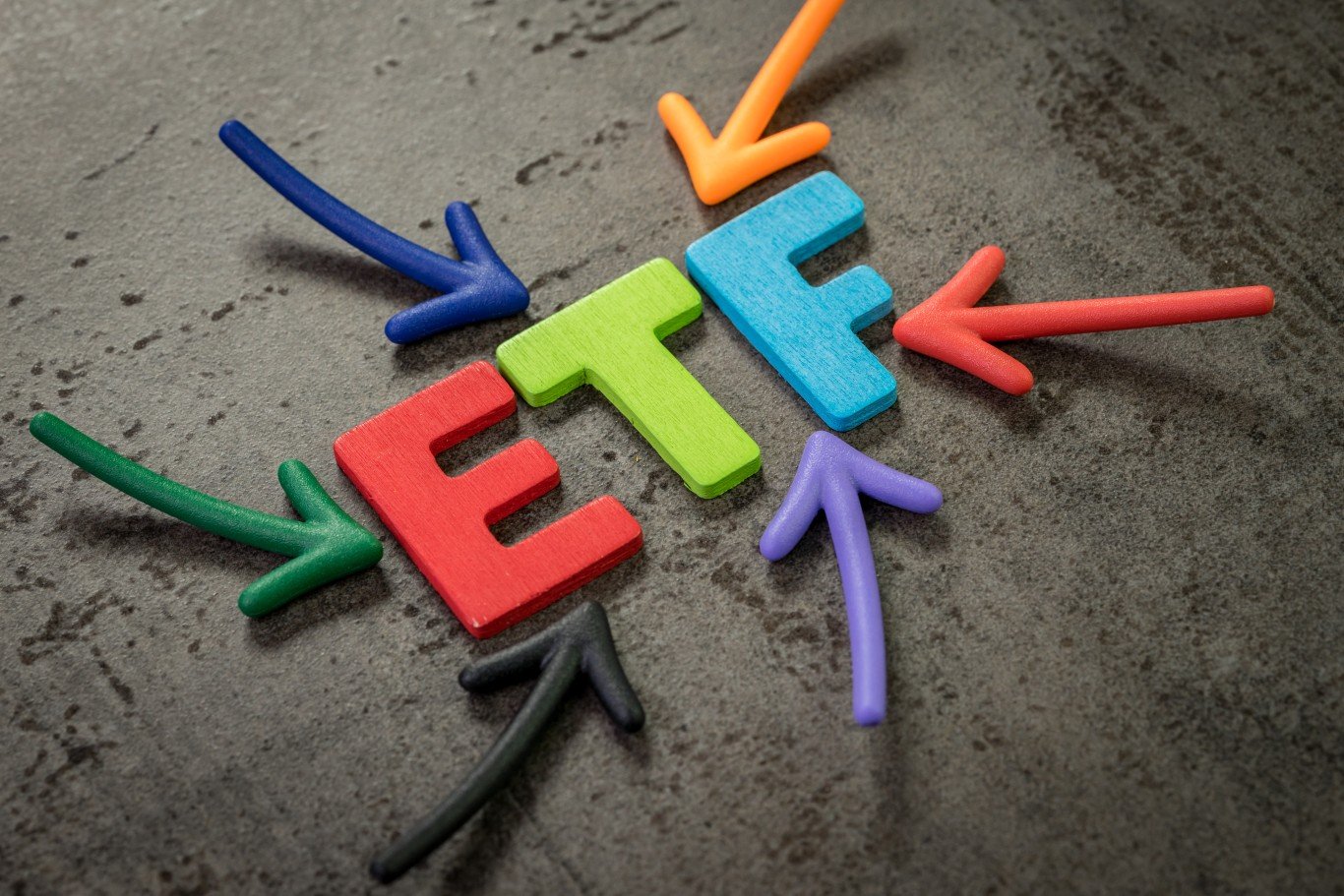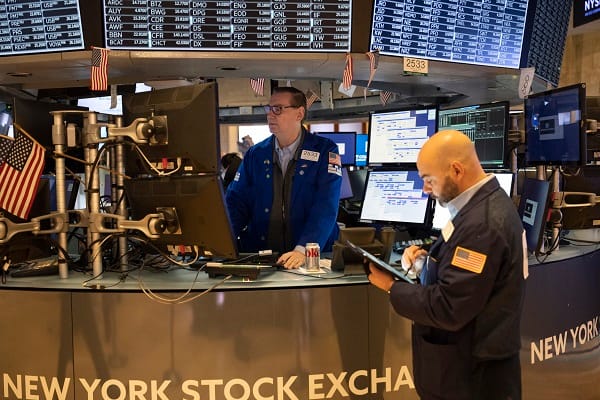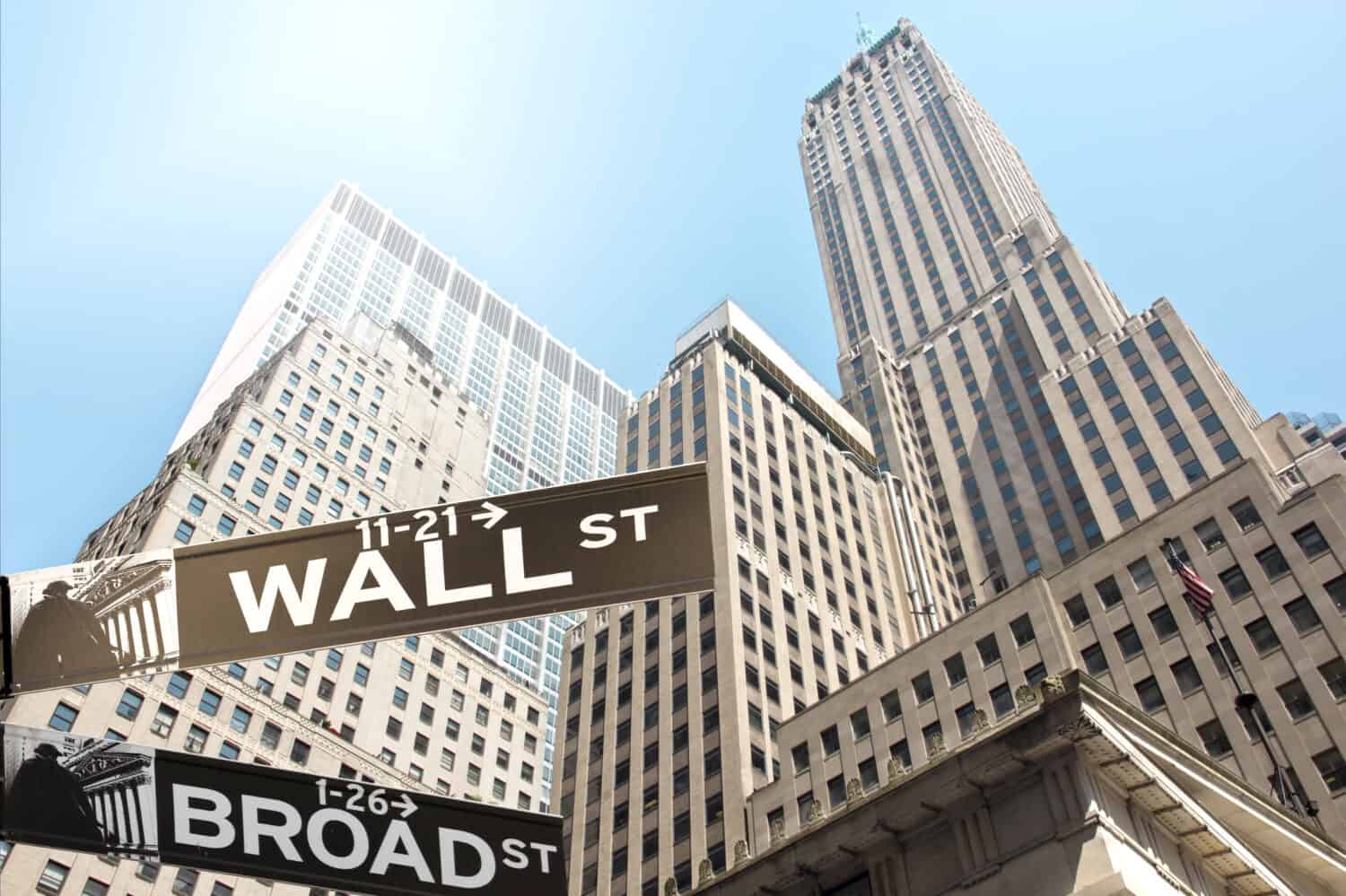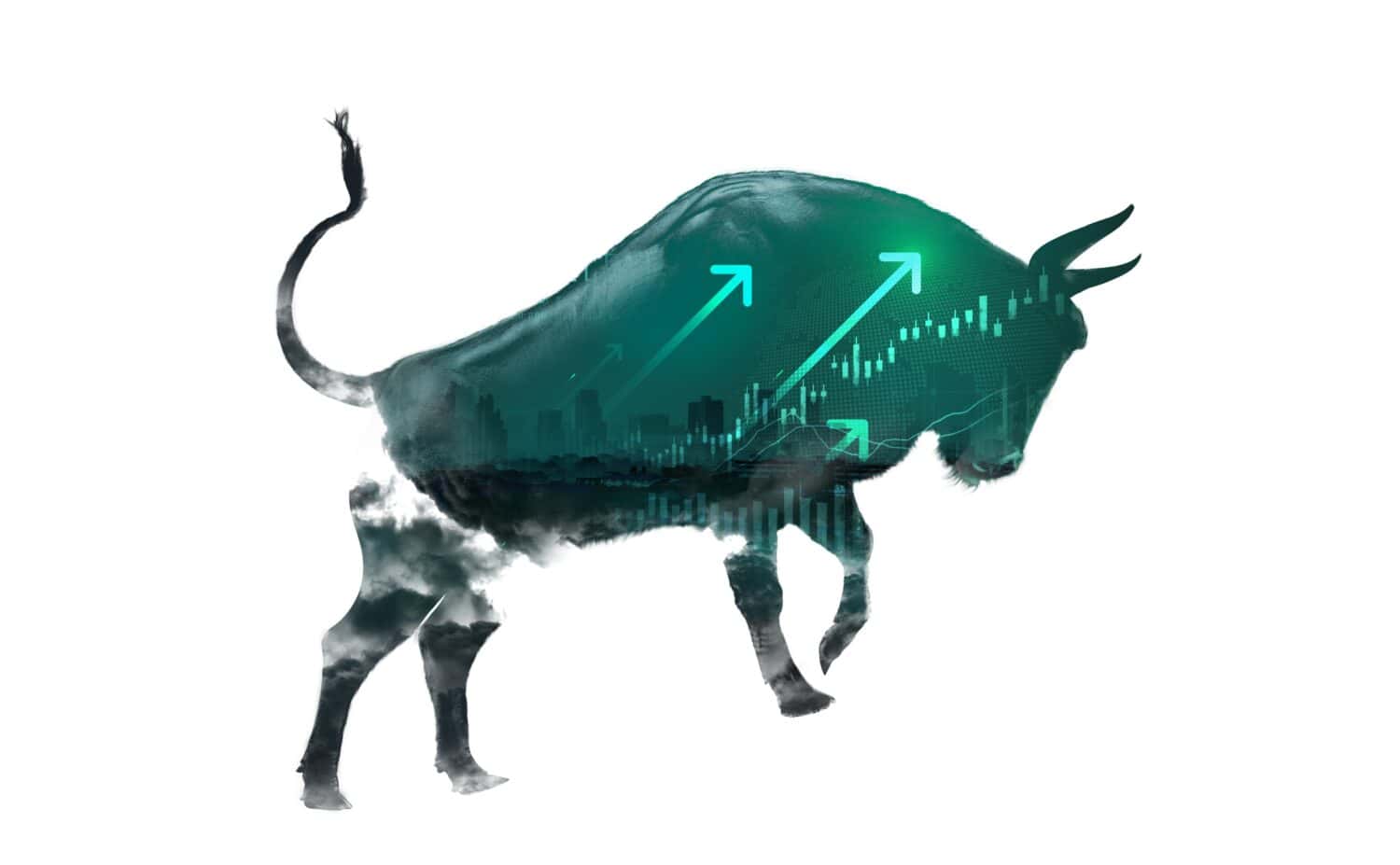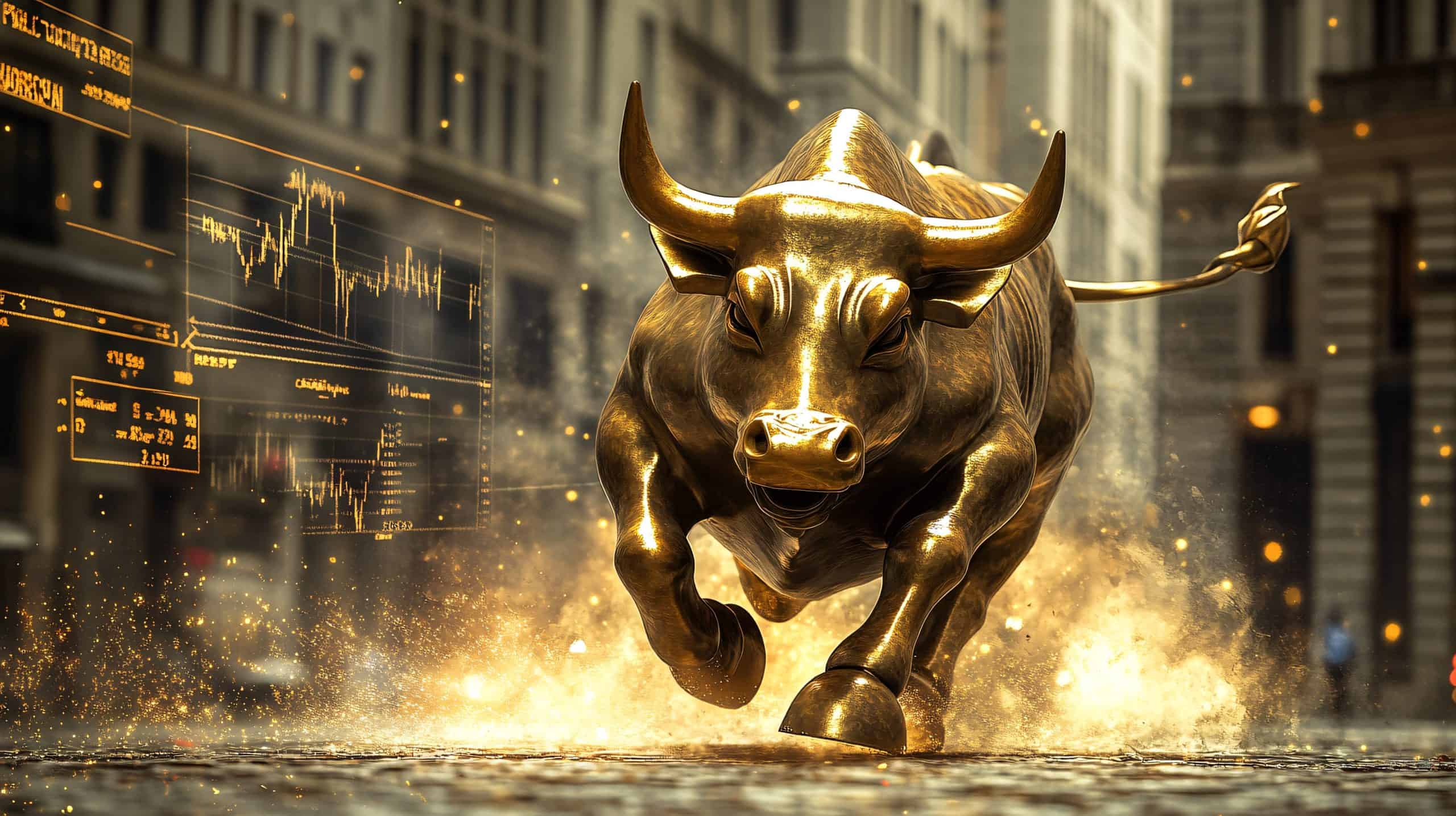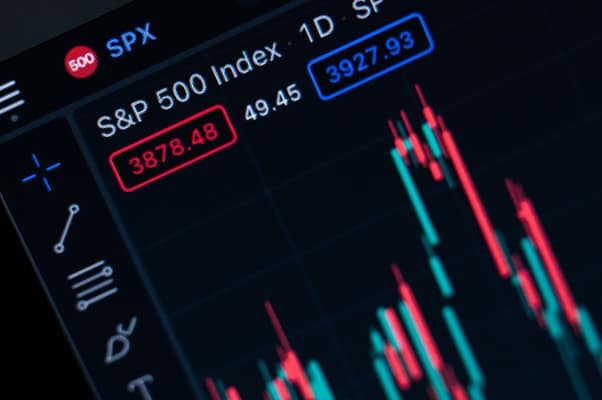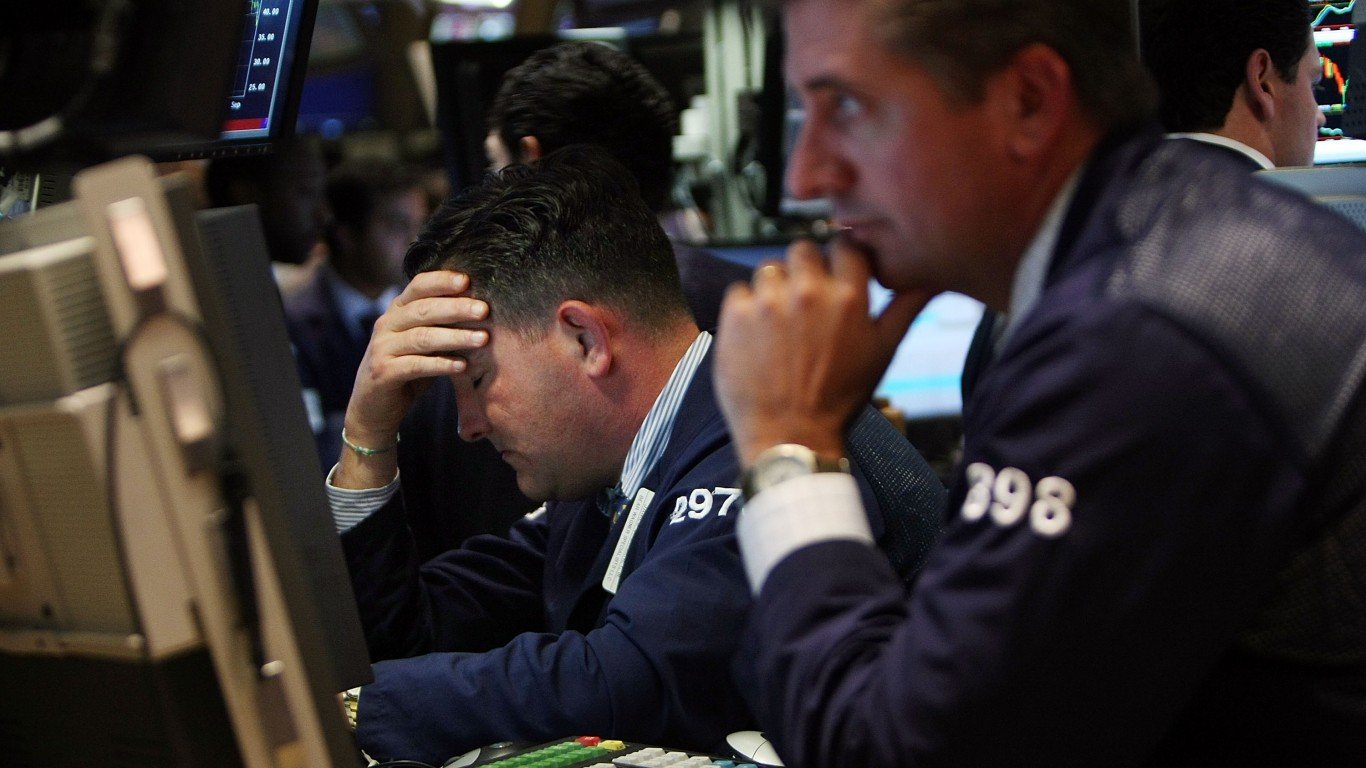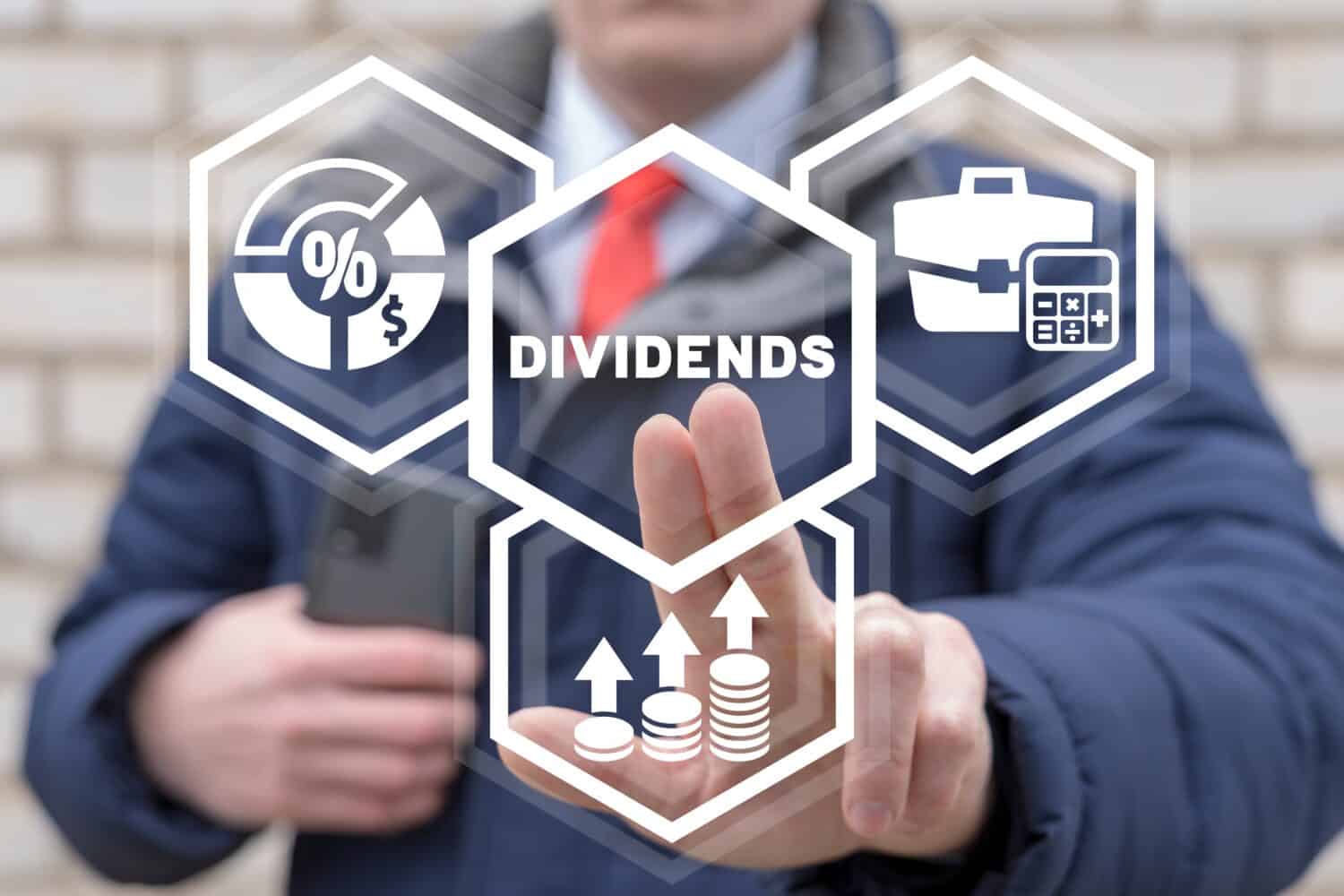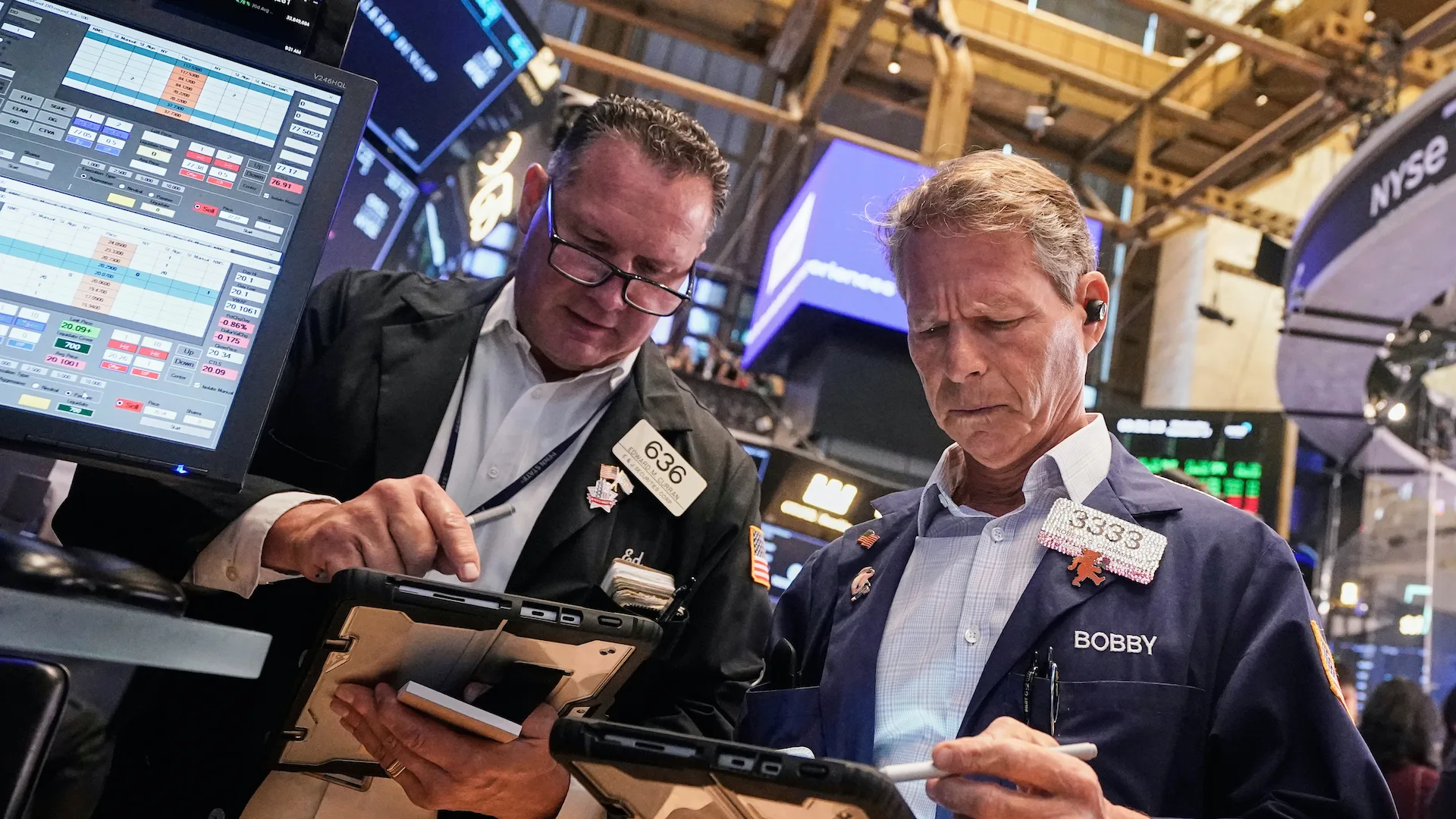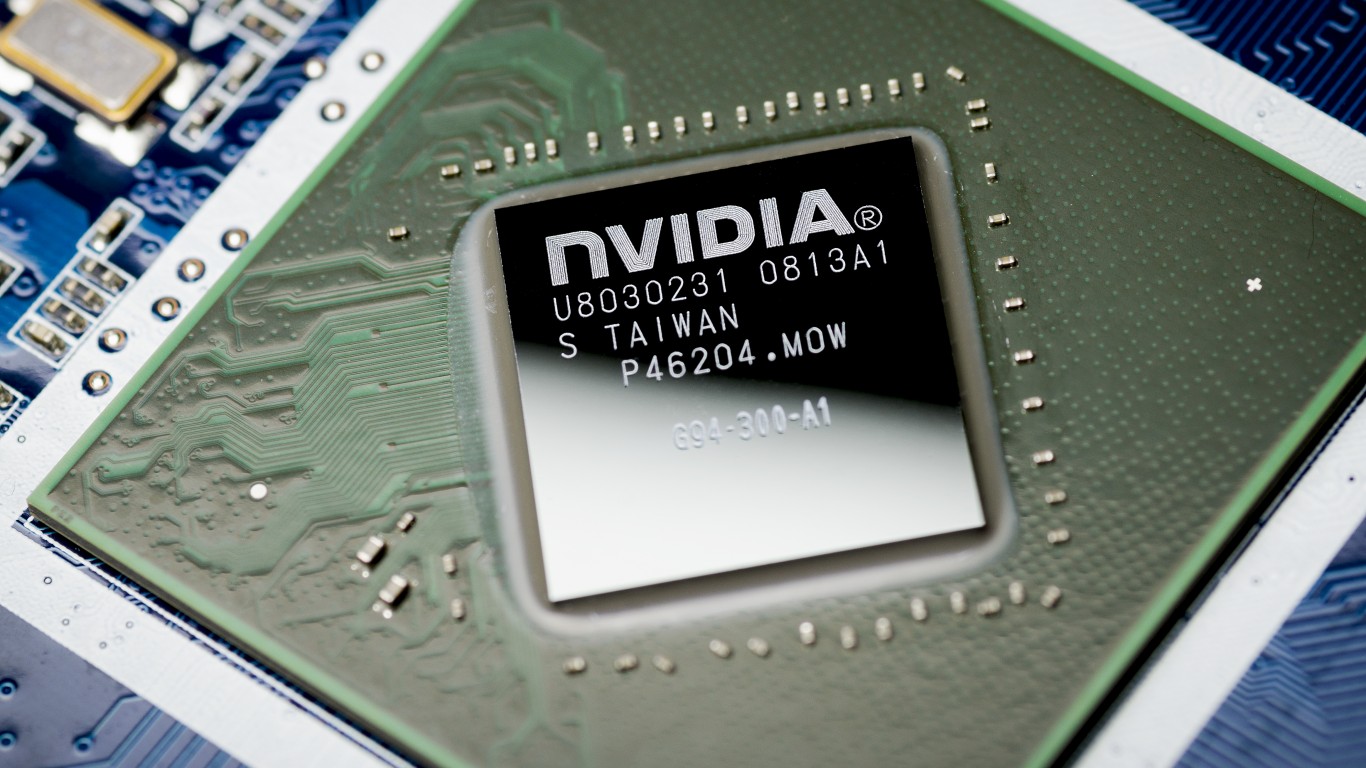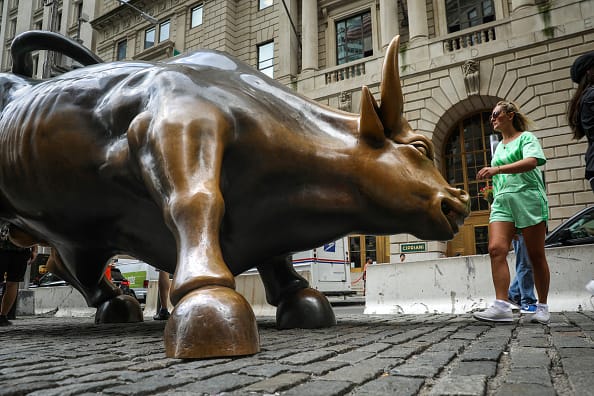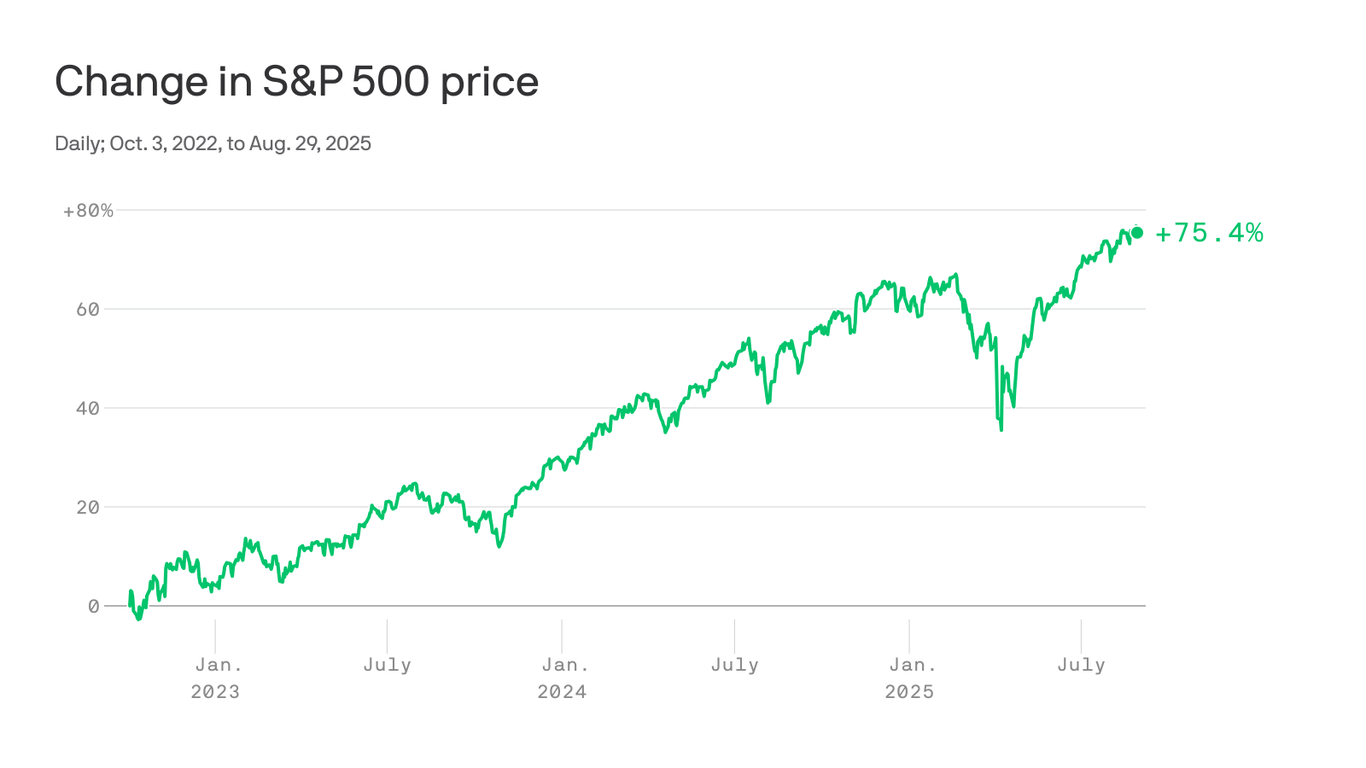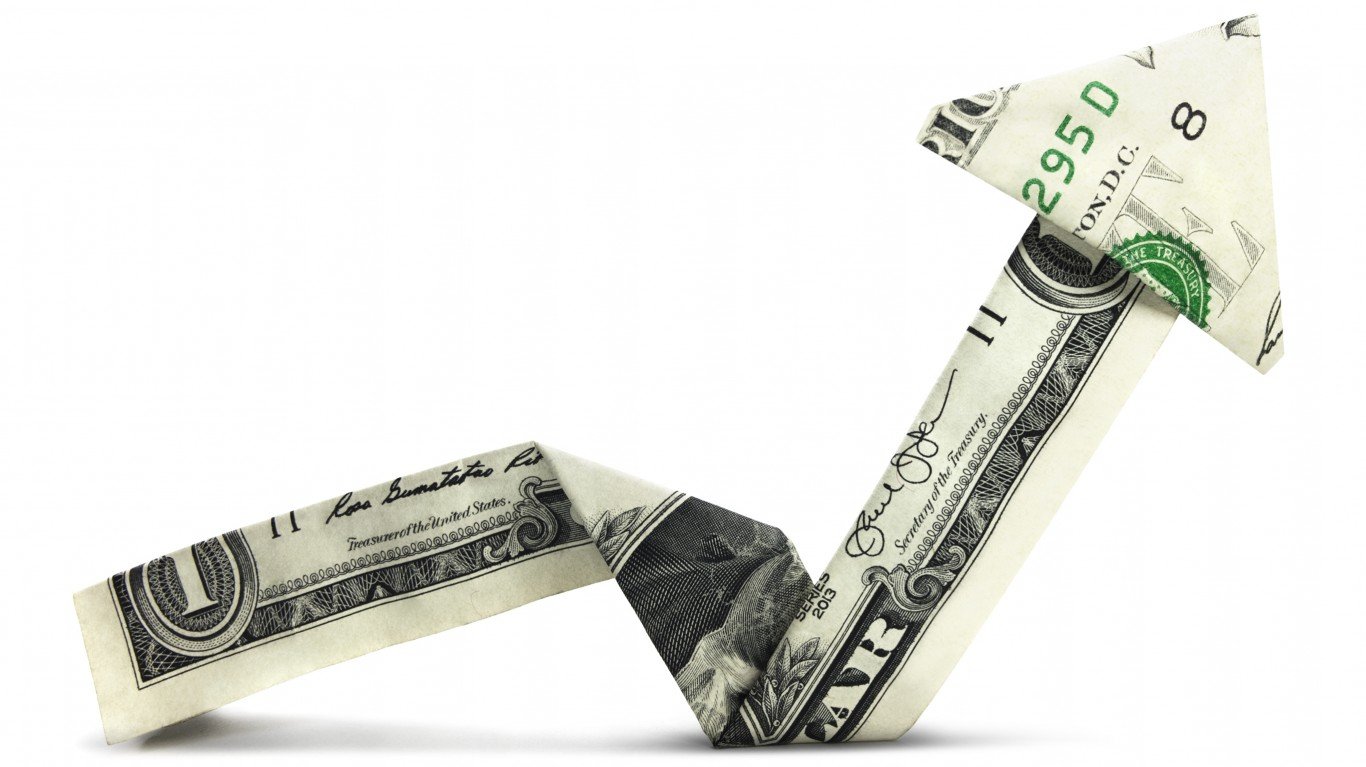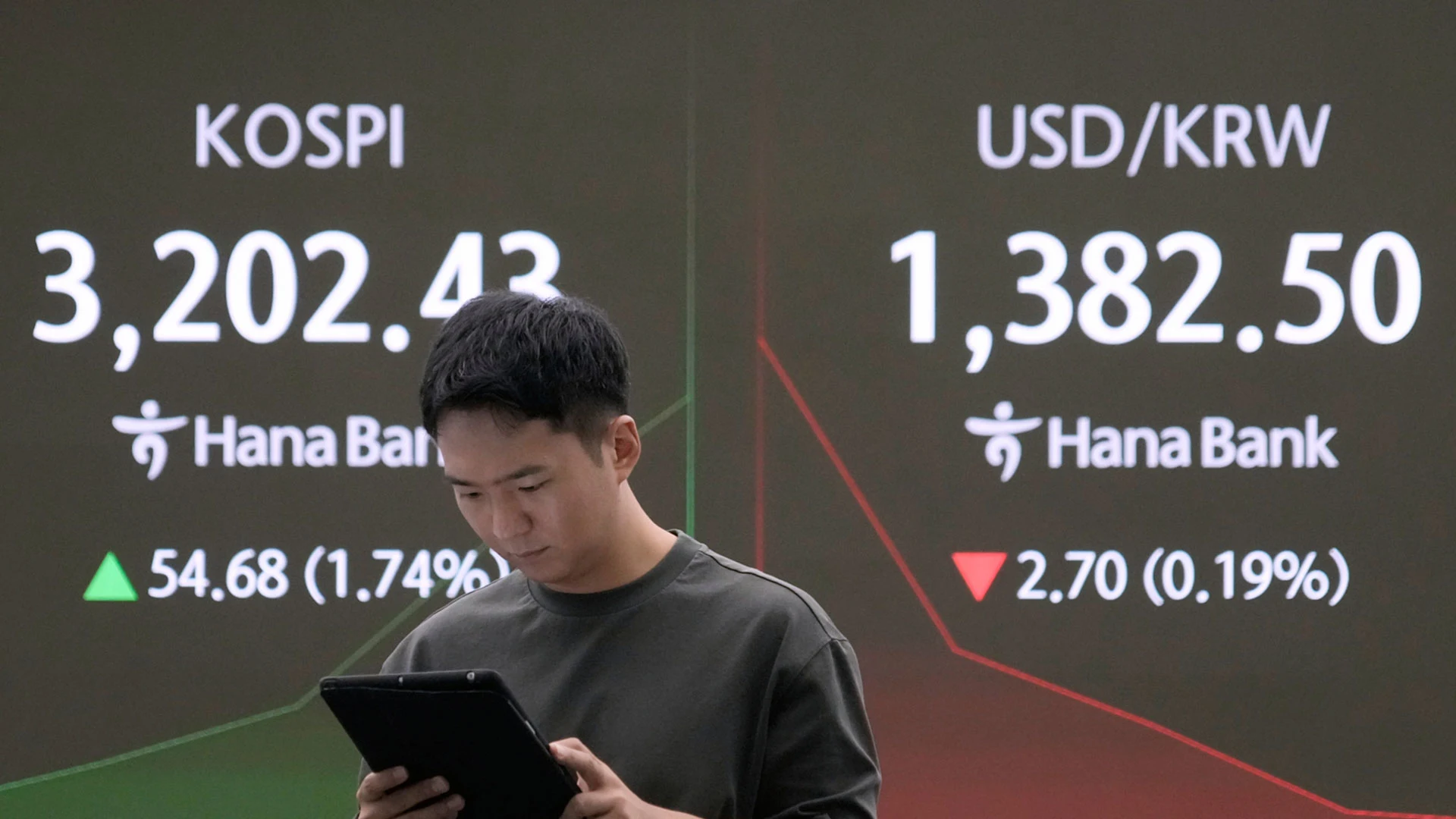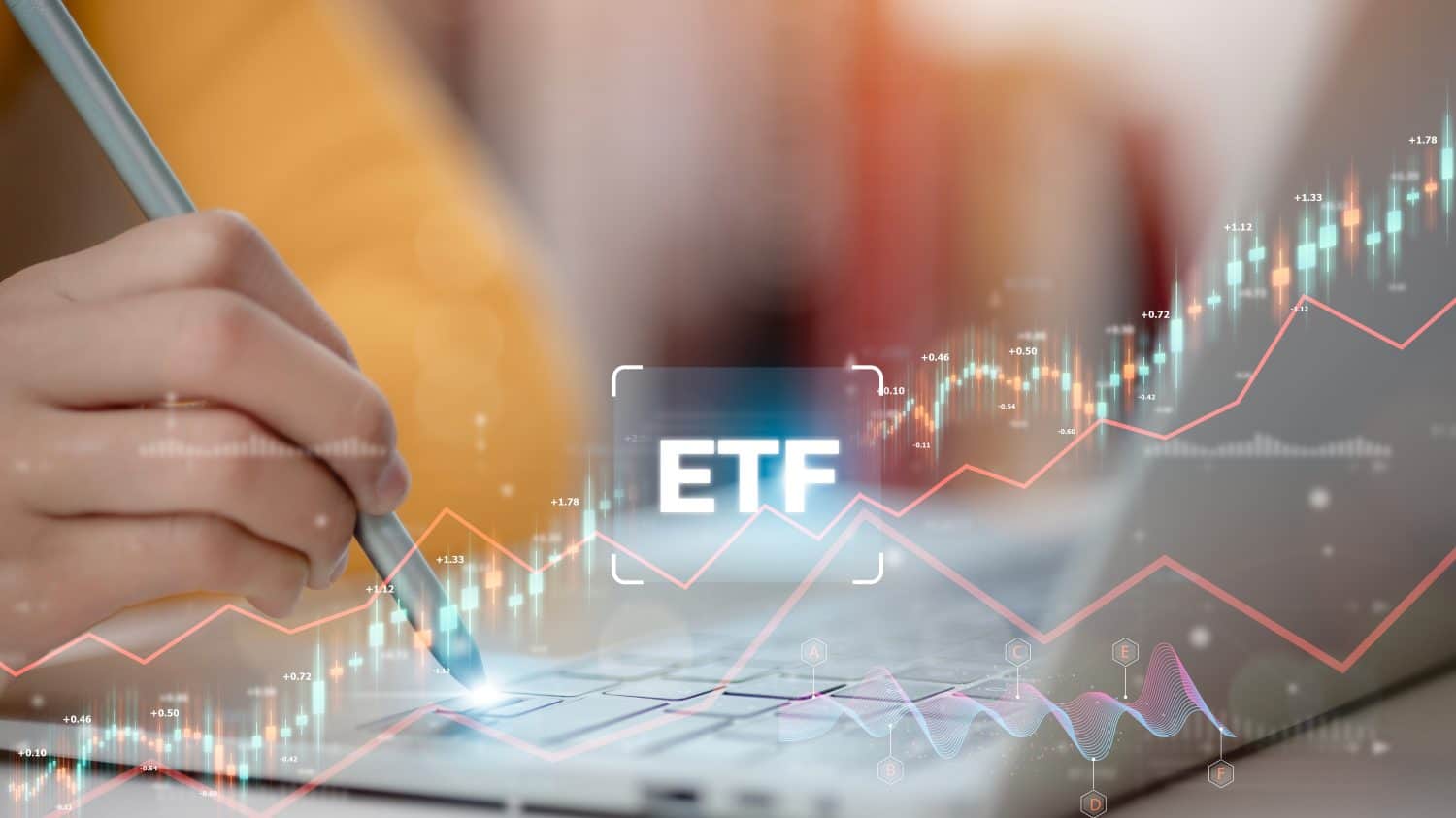#sp-500
#sp-500
[ follow ]
#etfs #earnings #diversification #federal-reserve #federal-reserve-policy #tariffs #amazon #stock-market
from24/7 Wall St.
4 days agoTuesday's Top 10 Wall Street Analyst Upgrades and Downgrades: Crowdstrike, Starbucks, Constellation Energy, McDonalds and More
The futures are trading higher on Tuesday after a strong start to the week on Wall Street. Traders were buoyed by positive news on the potential for a trade agreement with China and the potential resolution of the TikTok issue. With Wall Street ready for a deluge of earnings this week, the most important of which come from technology giants in the Magnificent 7, it may remain a task for the momentum-driven rally to keep moving higher. Still, with strong retail participation and new money pouring into the market from overseas, the run to 7000 on the S&P 500 is on and humming.
US news
from24/7 Wall St.
4 days agoLow-Cost Vanguard Funds That Could Lead Portfolios For Years
Perhaps one of the most important metrics long-term investors can forget about when building their portfolios is the cost of constructing these groupings of stocks. Indeed, whether it's outright cost (in the form of an expense ratio for owning an ETF) or the cost associated with the time and effort to research individual stocks and input them into one's portfolio (even if there are no associated trading fees for these moves), investing can be an expensive exercise.
Business
from24/7 Wall St.
1 week ago5 Best Dividend Stocks in the S&P 500
Income investors rarely chase the loudest headlines. They look for companies that mail out checks, no matter what the talking heads predict for next quarter, and the S&P 500 is still the most convenient hunting ground for that kind of reliability. The index has been shifting more towards growth due to the mega-cap stocks doing extremely well over the past three years, and then being joined in by a new group of AI stocks that have ballooned into the top rankings.
Real estate
fromFortune
1 week agoThe S&P 500 is close to market peak based on how many 'bear market signposts' it's hitting, BofA says: a whopping 60% | Fortune
Bank of America Research has issued a fresh warning for equity investors: the S&P 500, now hovering near historic highs, is demonstrating elevated risk levels with 60% of the firm's proprietary "bear market signposts" flashing red-just shy of the point that has historically heralded a market peak. The bank's S&P 500 Relative Value Cheat Sheet, published Monday, reflected growing caution among the team led by Head of U.S. Equity Strategy Savita Subramanian.
US news
from24/7 Wall St.
1 week agoStock Market Live October 20: S&P 500 (VOO) Gaining Momentum Ahead of Big Earnings Week
Futures are gaining momentum ahead of a big earnings week. At the moment, the S&P 500 is up about 12 points. The Vanguard S&P 500 ETF ( NYSEARCA: VOO) is up another $1.34 in premarket. The Dow is up 50, as the Nasdaq gains 67. More than 80 S&P 500 companies are slated to post earnings this week, including Netflix, General Motors, and Tesla.
Business
US news
fromLondon Business News | Londonlovesbusiness.com
3 weeks agoS&P 500 sustains its rally amid rate-cut expectations and macroeconomic risks - London Business News | Londonlovesbusiness.com
S&P 500 uptrend is sustainable as a U.S. soft landing, easing inflation, dovish Fed, improving earnings quality, AI productivity, and cooling real rates support equities.
Artificial intelligence
fromFortune
4 weeks agoSpending on AI is increasingly fuelled by debt and will be marginally 'negative' for corporate credit quality, Goldman Sachs says | Fortune
AI-driven capex is powering stock gains while companies increasingly finance AI build-outs with debt, modestly weakening corporate credit quality.
Business
fromFortune
1 month agoA place on the S&P 500 means a sure-fire stock boost-and a pleasant surprise for the CEO | Fortune
Inclusion in the S&P 500 often triggers large, rapid stock-price spikes because ETFs and institutional investors automatically buy new index entrants after the announcement.
fromBusiness Insider
1 month agoHedge fund September returns: Here's how Balyasny and ExodusPoint have performed so far this year
Well-known hedge funds, including Balyasny and ExodusPoint, made money last month, building on their gains as they enter the last quarter of 2025. Dmitry Balyasny's eponymous firm returned 1.3% in September, boosting its 2025 returns to 10%, a person close to the manager said. Michael Gelband's ExodusPoint continued its strong year with a 2% gain in September, according to an individual familiar with the New York-based asset manager. It's now up 12.3% for 2025.
Business
from24/7 Wall St.
1 month agoSome Believe VOO Will Never Drop Below $600 Again - Here's Why They're Confident
As a barometer of US industrial and corporate economic health, the S&P 500 Index has few equals. Over the past decade, less than 15% of professional large-cap fund managers have been able to surpass the performance of the S&P 500. In fact, no less an investing authority than Warren Buffett cited in the 2013 Berkshire Hathaway shareholder letter: " The goal of the non-professional should not be to pick winners...instead, seek to own a cross-section of businesses that in aggregate are bound to do well. An S&P 500 index fund will achieve this goal."
Business
fromFortune
1 month agoEveryone agrees stocks are suspiciously high. And everyone agrees they're going higher anyway. | Fortune
Fortune's Shawn Tully points out that the S&P 500's price-to-earnings ratio just hit 30, which often signals impending doom. "A PE of 30 means big cap stocks are really, really expensive by historical standards. It also signals that from these heights, the chance for big returns going forward over any extended period are low, and the risks of a sharp 'reversion to the mean' downdraft is far more likely," he wrote on Tuesday.
Business
fromFortune
1 month agoIt's been a surprisingly excellent run for stocks. That's exactly what has market watchers on edge | Fortune
On August 28, the S&P 500's price-to-earnings ratio reached a towering reading of nearly 30, the actual number that day was a whisker short at 29.85. Now it's official: Around 3 PM on Monday, September 22, the big cap index sailed beyond that historic barrier, gaining 32 points or 0.48%, a surge that pushed the multiple over the landmark to 30.09.
Business
fromLondon Business News | Londonlovesbusiness.com
1 month agoS&P 500 near an all-time high of 6,530 - London Business News | Londonlovesbusiness.com
At present, the fundamental backdrop remains fairly favourable as the U.S. labour market has cooled, helping yields and the U.S. dollar ease, thereby partially relieving discount pressure on equity valuations, especially for interest-rate-sensitive groups. However, part of the rate-cut expectations has already been priced in, so the index's positive reaction tends to be selective and depends heavily on upcoming data as well as the message at the FOMC meeting.
Business
fromFortune
1 month agoCompanies are spending so much on AI they're cutting share buybacks, Goldman Sachs says | Fortune
One unexpected side effect of the Magnificent 7's race to build massive AI data centers-and source the power needed to run them-is that they are reducing share buybacks to fund them, according to Goldman Sachs. Companies routinely buy back their own shares to incentivize investors for holding them, to reduce the number of shares available (thus boosting earnings per share), and to boost their own stock prices.
Business
from24/7 Wall St.
1 month agoThe September Effect: Time to Sell or a Chance to Buy Low?
Dubbed the " September Effect," this phenomenon sees the S&P 500 averaging a negative 0.8% return since 1926, the only month with a consistent negative average over nearly a century. Theories abound as to why: from portfolio rebalancing by institutional investors to tax-loss harvesting and post-vacation market jitters.
Business
from24/7 Wall St.
2 months ago4 Stocks Driving Most of The S&P 500's (VOO) Historic Run
The S&P 500 etched its name in history yesterday, closing at a new all-time high of 6,501.86, despite investor concern about Nvidia's ( NASDAQ:NVDA ) earnings and doubts about the ongoing AI boom. It's been a rollercoaster year marked by fears of inflation, rising Treasury yields, and geopolitical tensions, yet the index has scaled a "wall of worry," defying skeptics with a 10% gain so far this year.
Business
from24/7 Wall St.
2 months ago1 High Yield ETF That's Beating The S&P (VOO) Right Now
High-yield ETFs have been quite the buzz this year. While covered call ETFs (or premium income, as some are referred to) are really nothing new for the world of passive investors, I do think that many of the swollen yields have attracted investor attention due to the lower (and falling) yields, particularly in the defensive dividend stocks, which have also had decent years. Indeed, there seems to be somewhat less yield going around, and not enough to satiate some of the more aggressive passive income investors out there.
Business
from24/7 Wall St.
2 months ago1 Secret ETF That Outperformed the VOO by 130% Year-To-Date
A far less famous ETF has delivered 20.14% in gains year-to-date (~130% better than the VOO). This is even better than the 10.4% that the QQQ returned. The Invesco S&P 500 Momentum ETF (NYSEARCA:SPMO ) is the ETF in question. It still invests inside the S&P 500, but the index re-weights and puts extra money into the names with the strongest price momentum, cutting loose the laggards.
Business
Artificial intelligence
fromFortune
2 months agoThe AI revolution will cut nearly $1 trillion a year out of S&P 500 budgets, Morgan Stanley says-largely from agents and robots doing human jobs
Widespread AI adoption across the S&P 500 could unlock roughly $920 billion in annual savings, primarily by reducing payroll and automating routine knowledge work.
fromFortune
2 months agoAI spending added 0.5% to GDP growth and the Magnificent 7 stocks are driving the market
The S&P 500 is up 10% year-to-date, powered by the 'Magnificent Seven' tech giants whose foreign-heavy revenues are being boosted by the weaker dollar. Concentration in the top 10 stocks is at its highest since the 1960s, with earnings strength - 83% of companies beating estimates - driving sentiment.
US politics
fromLondon Business News | Londonlovesbusiness.com
2 months agoS&P 500 at a critical crossroads - London Business News | Londonlovesbusiness.com
The S&P 500 experienced a pullback of 0.49% amid growing uncertainties surrounding the U.S. economy and global conditions, driven by weak economic data and geopolitical risks.
US politics
fromFortune
3 months agoThe S&P 500 is 'extremely concentrated,' Apollo economist says, warning the best AI investment may not be in the Magnificent 7
The top 10 stocks contribute 54% of market returns since January 2021, with the Magnificent Seven driving significant risk exposure for investors.
Venture
from24/7 Wall St.
3 months agoStock Market Live July 25: S&P 500 (VOO) Prepares to Set a New Weekly High Today
Earlier in the week, trade deals with Japan and Indonesia contributed to pushing the market to record highs, and the possibility of a deal with the European Union adds to optimism. The Vanguard S&P 500 ETF reached an all-time high of 583.20, with a promising outlook for further gains. Key factors influencing the sustainability of this rally include both successful trade negotiations and the mixed results of earnings reports. Some companies, like Intel, reported losses despite exceeding revenue expectations, while others, like Deckers, had brighter earnings news, indicating a divided performance among major players.
US Elections
US politics
fromLondon Business News | Londonlovesbusiness.com
3 months agoS&P 500 continues to set new highs ahead of earnings season and mixed economic data - London Business News | Londonlovesbusiness.com
S&P 500 gains 0.07%, reaches record high, supported by investor optimism despite mixed economic signals.
[ Load more ]

